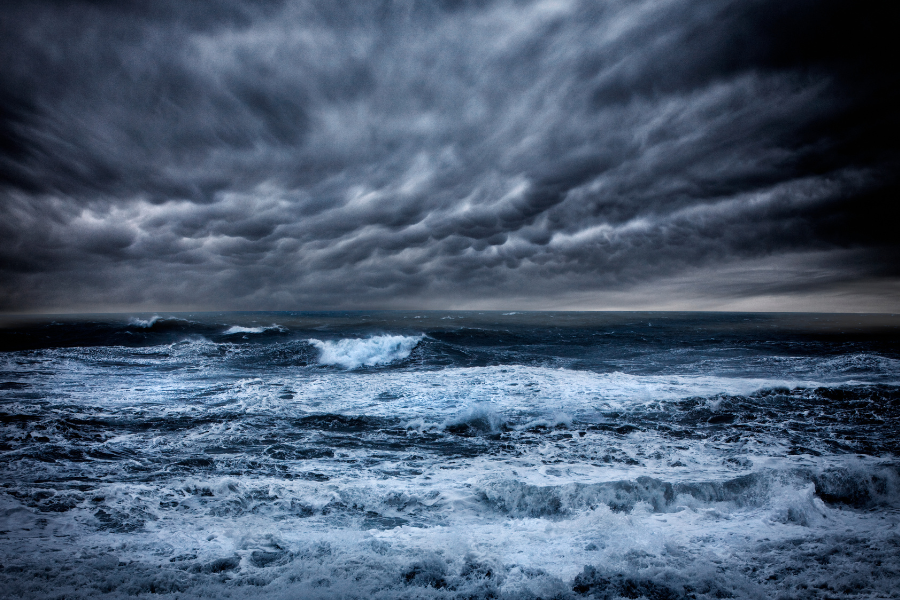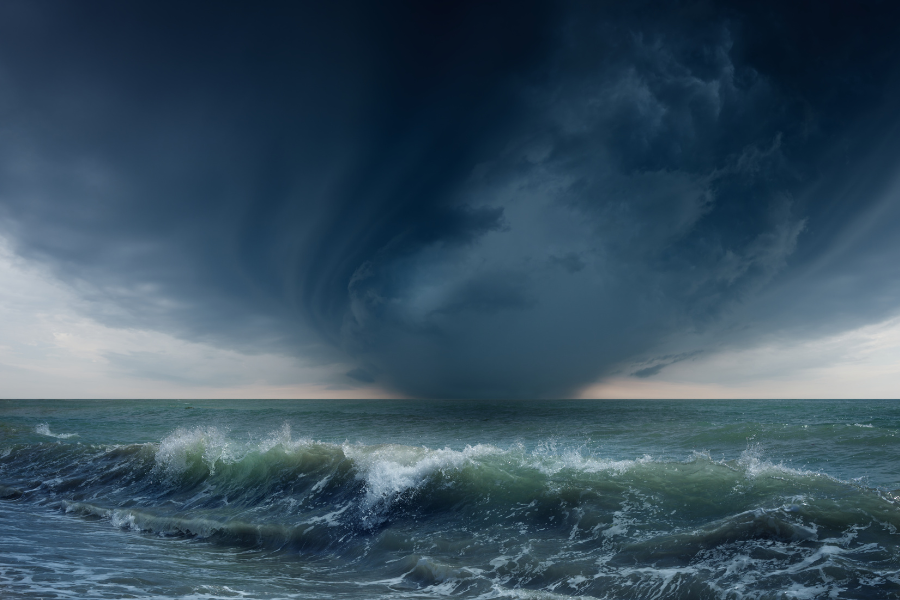What’s it like to sail boat in storm? How can you prepare? What do you do when a storm hits you when you’re anchored? What about unexpected storms and squalls? Watch this video, and you’ll gain answers to these questions and more.
Sailing Boat In Storm Video
Sailing in Storms Quick Tips
- If you haven’t already, understand what you must do to prepare the boat for a storm before buying it. Some boats are easier than others—you don’t want to buy a boat that makes life difficult in a storm!
- Don’t make the mistake of thinking that you’ll never experience a storm. Storms pop up from nowhere from time to time. If you own a boat and go sailing, you will eventually have to weather a storm! (So, be prepared.)
- As soon as you have your boat, take it out and practice reefing your sails (reefing is explained in the video above and demonstrated here: Rigging, Sails and Reefing our Oyster 56‘ – a new screen will open with our YouTube video).
- If a storm is going to hit, prepare yourself and your partner/family/crew. Put the right clothes on (waterproofs?), get food/water, and take seasickness pills if necessary before the storm hits. Put lifejackets, harnesses, and lifelines on for anyone on deck.
- The saying is, ‘If you have to reef your sails, it’s already too late!’ If you have any indication of a storm or high wind gusts, reef your sails.
- When at anchor, if a storm is coming, the safest place is towards the outside of the bay. When anchoring, put out as much chain as possible without risking hitting another boat or land. Consider instigating an anchor watch – every three hours, someone is on deck to ensure the anchor is holding.
- If the storm becomes too much – while sailing or at anchor, and if you can get far enough away from land/objects you can heave-to. By heaving-to you pull your headsail and mainsail in tight and then backfill the headsail. In other words, turn the wrong way so the headsail fills with wind on the wrong side. This will effectively put the boat in the best position for the boat to calm down, level out, and slow to a crawl.
Sailing in storms is a serious matter that requires preparedness, experience, and sound judgment. Whether you’re an experienced sailor or a novice, it’s crucial to understand the risks and take the necessary precautions to ensure your safety and the safety of your crew. This article will outline essential tips and strategies for sailing in storms.

1. Preparation is Key
Before you even set sail, preparation is paramount. Here’s what you should do:
- Check the weather forecast: Monitor weather patterns and be aware of any potential storms.
- Inspect your boat: Ensure your sailboat is in top condition, with all safety equipment (life jackets, flares, etc.) readily available.
- Have a plan: Discuss storm tactics with your crew and establish a clear plan of action.
2. Storm Tactics
When facing a storm, here are some essential tactics:
- Reduce Sail: Reef your sails early to reduce the boat’s power and maintain control.
- Head into the wind: If possible, head into the wind or waves to minimize the risk of capsizing.
- Secure everything: Stow loose items and secure hatches to prevent water from entering the boat.
- Wear life jackets: All crew members should wear life jackets at all times.
- Stay calm: Panic can lead to poor decision-making. Stay calm and assess the situation.
3. Heaving-to
Heaving-to is a technique where you balance the sails and rudder to slow down and stabilize the boat. This can be a valuable tactic in storms to reduce stress on the boat and crew.
4. Running with the storm
In some cases, it might be safer to run with the storm. This involves sailing downwind with reduced sails. However, this should only be attempted if you have enough sea room and confidence in your boat’s handling.
5. Seeking Shelter
If possible, try to find a safe harbor or anchorage before the storm hits. If you’re already at sea, try to find a protected area away from the worst of the storm.

Important Considerations When Sail Boat in Storm
- Lightning: Lightning is a significant threat in storms. If you see lightning, stay below deck and avoid touching metal objects.
- Waves: Large waves can cause severe damage to a sailboat. Try to avoid breaking waves and steer the boat to minimize their impact.
- Communication: Keep your VHF radio on and monitor weather channels for updates. If possible, inform someone on shore of your plans and location.
Sailing in storms can be a challenging and dangerous experience. However, with adequate preparation, knowledge, and sound judgment, sailors can increase their chances of weathering the storm safely. Remember, safety should always be the top priority.
What is your top sailing in storms tip?
Please leave them below.

Check Out Other Sailing, Maneuvering & Mooring Related Articles and Videos
To get an overview of all our sailing, maneuvering, and mooring related articles and videos, start here: Sailing, Maneuvering & Mooring. Otherwise, check out one of these articles or videos: